December 9 - 15, 2012: Issue 88
Careel House 105 Whale Beach Road now 105A Whale Beach road, Careel Head
On Careel Head, overlooking the ocean to the east, Careel Bay to the west and Whale Beach to the north is one of Pittwater’s historic homes which still has a powerful atmosphere today of all associated with her. Built by Alexander Stewart Jolly, the poet/architect who built Loggan Rock, this home, a private residence for over 20 years now, was once a scene of high culture and entertained some of Australia’s premier writers as guests. Mr Jolly was renowned for camping on the building sites he worked on. The views from this hilltop, and the descriptions in his book for children ‘Spirit of the bush’ of walking down to Careel Bay to get oysters, point to this construction and its nearby project of the log on the rock, as the place and time of when this work was written.
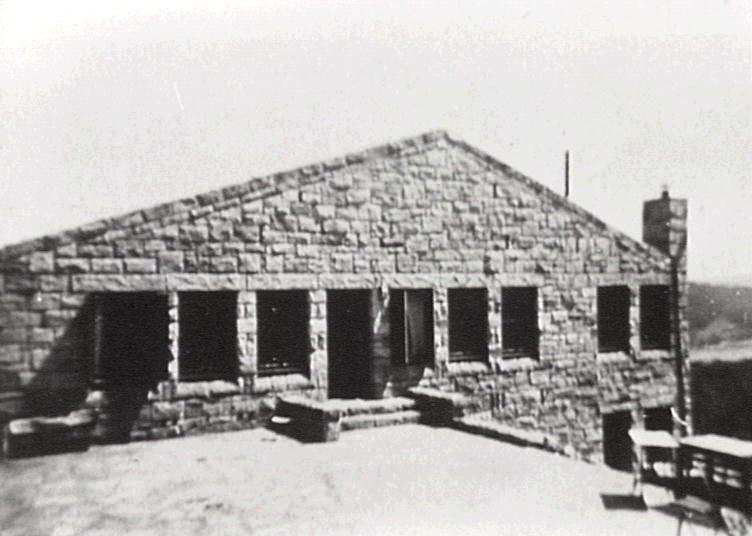
Careel House, 1942, Courtesy Mona Vale Library Local Histories Unit.
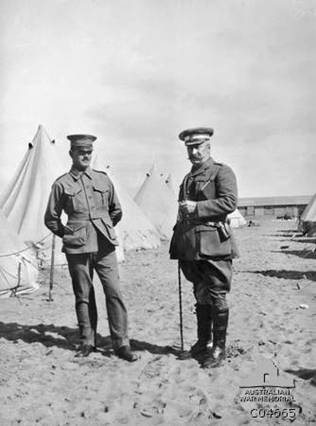 Harold Kent sold Lot 175 to Charles Berry Grieve in 1932 and Alexander Stewart Jolly commenced the design and construction of Careel House on that parcel of land. Careel House was completed in 1934.
Harold Kent sold Lot 175 to Charles Berry Grieve in 1932 and Alexander Stewart Jolly commenced the design and construction of Careel House on that parcel of land. Careel House was completed in 1934.
Charles Berry Grieve was born in Wollongong on 22nd of July 1889. A Warrant Officer in WWI he served in 1st Australian Divisional Train and was awarded a Military Cross, 1914-15 Star, British War Medal, and Victory Medal after service in Egypt and the European theatres. He returned to Australia 28 September 1919. By the outbreak of WWII he was a Major. Portrait of Warrant Officer C B Grieve (left) and Major J G Tedder, both of 1st Australian Divisional Train, at Mena Camp.
Made from big blocks of sandstone cut from the site itself, with timber windows and iron roof, stone chimney, retaining walls and flagged courtyards and terraces, .some sources state the house was built for his wife Pauline Grieve. Mrs Grieve was born in Western Australia;
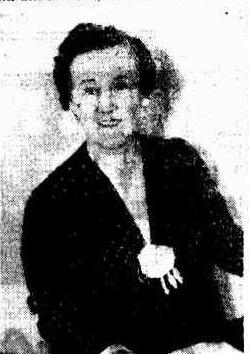 To Aid Militia Drive.
To Aid Militia Drive.
The appointment by the Federal Government of Mrs. Pauline Grieve as one' of' the three joint, secretaries of the Australian Defence League, represents an endeavour to link up the interest of women with the drive for the expansion and extension of the militia.
As honorary secretary of the women’s auxiliary, Mrs, Grieve's responsibility will be to secure the co-operation of all existing women's organisations-social. business, political, and' welfare. Already she has received invitations to speak to women's gatherings in drawing-rooms, in clubs, and at meetings. Her office is on the ninth floor of the Commonwealth Bank.
WIDE EXPERIENCE.
With experience in many avenues of women’s work, Mrs. Grieve undoubtedly has special qualifications for her new task. Born in Western Australia, she married Lieutenant Mordaunt Reid, officer-in-charge of the local militia at Coolgardie, where he was engineer for the Electric Supply Company on the Coolgardie goldfields. He relinquished (his job on the outbreak of war to enlist, and on April 25 1914, the first Anzac Day, he was reported missing.
In Egypt, where she went to try and find news of her husband, Mrs. Grieve joined-the 2nd Australian Hospital at Gezireh and after the evacuation went to England where, still in the hope that she might get news of him, she joined up with the Australian Red Cross prisoners of war department as assistant secretary. After the war she visited France, Germany, and Italy as an officer of the Red Cross Society.
On her return lo London. Mrs. Grieve took a course of obstetrics at, Clapham Maternity Hospital, which included district nursing and actual attention to mothers and babies.
When she returned to Australia in 1920 Mrs. Grieve was awarded an O.B.E., and was appointed by the Department of Home and Territories to the section of the official records dealing with the experiences of the A.I.F. prisoners in foreign countries during the war. This record is now in the Canberra War Museum. Since her marriage to Major Charles M. Grieve. Mrs. Grieve has made her home in Sydney.
FAITH IN WOMEN.
"I have unbounded faith in women and their influence in national life, and feel sure they all realise how necessary it is that we should each play our part in the national! As well as the domestic life of our country," declared Mrs. Grieve. IMPORTANT POST FOR WOMAN. (1938, November 23). The Sydney Morning Herald (NSW : 1842 - 1954), p. 7. Retrieved from http://nla.gov.au/nla.news-article17540153
C B Grieve married Pauline Reid in 1923 after his first wife divorced him in 1921;
GRIEVE V GRIEVE. This was a suit for divorce brought by Iris Eileen Hughes Grieve (formerly Bambury)against her husband, Charles Berry Grieve, on the ground of non-compliance with a decree for restitution of conjugal rights. The marriage took place at Shepherd’s Bush, London, on Juno 17, 1919, according to the rites of the Presbyterian Church. A decree nisi was granted, returnable in six months. Mr. Sheppard (Instructed by Messrs. Pigott and Stinson) appeared for the petitioner. IN DIVORCE. (1921, March 15). The Sydney Morning Herald(NSW : 1842 - 1954), p. 5. Retrieved from http://nla.gov.au/nla.news-article15951302
C B Grieves is listed as the owner of the land, and the house was originally completed by 1932, there seem to be two weeks when it was up for sale;
FORTHCOMING AUCTIONS. Hardie and Gorman Proprietary, Limited, announce that their next indoor sale will beheld in the rooms on Wednesday, February17, when a list will be submitted, including: Careel House, water-frontage home, at Palm Beach; REAL ESTATE. (1932, January 30). The Sydney Morning Herald (NSW : 1842 - 1954), p. 11. Retrieved from http://nla.gov.au/nla.news-article16837462
Hardie and Gorman Pty., Ltd., report that the property known as Careel House, Pittwater-road, and vacant land adjoining, advertised for sale on February 17, have been privately sold. REAL ESTATE. Outlook Uncertain. (1932, February 13). The Sydney Morning Herald (NSW : 1842 - 1954), p. 10. Retrieved from http://nla.gov.au/nla.news-article16840728
C B Grieves, who is listed as being a resident of Wentworth from 1937-1943 in electoral rolls, may not have permitted lengthy visits. His wife, however, clearly refurbished and added to the original structure:
The House on the Cliffs. Rock-hewn and Facing the Sea.
Motorists climbing the hill on the opposite side of Whale Beach were wont to look across to the other headland and wonder what lunatic was hewing into the stone of the cliff to make a house. People who dined at Jonah's used to look across and comment in speculative tones as lo whether it was to be a monastery away up there on the cliffs or whether some astronomer had chosen this high point for a special reason. Some said openly that a madwoman with two fierce dogs lived there alone, and would attack any-one who ventured near.
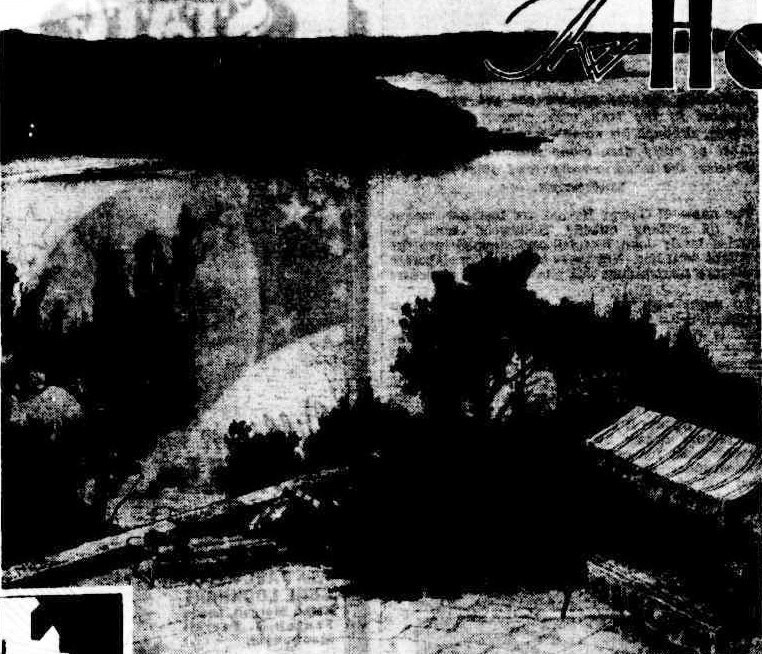
The view from the house cm the cliffs, looking north.
THIS was all very romantic and highly exciting, and what the stories lacked in fact they made up for in fiction. Which is usually the way with stories based purely on speculation. The fact that a strong pair of field-glasses from time to time revealed the presence of a slight figure with fair, greying hair blowing in the breeze, silhouetted on a high lock and accompanied by two dogs, one a white Sealyham, the other a gentleman of doubtful persuasion, but none the less devoted, lent colour to the story. Sometimes she was seen to point find gesticulate before she turned and disappeared amid the stonework and masonry still in progress.
This was Mrs. Grieve, superintending the building of her residence, and come down for an odd week-end to camp with her husband, Major Grieve, the better to see what was going on.
It Isn't any fun hewing a residence out of the solid rock that forms three-parts of one’s purchased property, particularly when labour troubles crop up on the way. Mrs. Grieve had certain ideas of her own about the way of her house, and, naturally, she was bound to come into conflict with the various people she employed. She admits frankly that she knew nothing about masonry, carpentry, spirit-levels, and the like, but-she knew what she wanted to achieve-and she stuck to her guns. This doesn't make for smooth-running in house-building, nor speed, but in the long run it has produced a magnificent house of solid stone and hardwood.
"The place is full of mistakes, mostly my own fault," she says; "but it is what I wanted, and, though it has taken nearly two years to build, and has caused me at times sufficient worry almost to justify the classification, 'mad woman with two dogs,' I think it has been worth while."
All this as we approach the house, up the winding road that leads to Whale Beach, and then, swinging sharply right from a bend In the road near the crest of the hill, to climb a grassy incline where a dirt track has been formed. And when we finally reach the front gate, still forty feet below the house, which towers above like a fortress, our hostess says, opening the slip rails:
"Come up here, and I'll show you the finest view along the coast."
Between two huge boulders runs the stone and concrete paved path. It winds round behind a rock where pelargonium’s, geraniums, ice-plant, and lavender grow in profusion with the wild bush shrubs. Up a short Sight of steps, and we are on the first terrace, where a huge yellow acacia, in full bloom for the moment, almost blots out the view of the house. We follow the path and two great flights of shallow stone steps are before us. This house has been planned on heroic lines.
Up the first flight of steps, while our hostess chats all the time.
"From the window up there, before the glass was in, mind you, I directed the laying of these steps. I found all the levels myself and super-intended the placing of every stone. I'm rather proud of these steps. I never was a stonemason before, but I reckon I could get a job with the trade now."
We are a little out of breath at the second terrace, grassed and providing the entrance to the lower floor of the house-a house built into the solid rock side of the bluff overlooking Whale Beach-and of surely the whitest, most gleaming stone ever quarried.
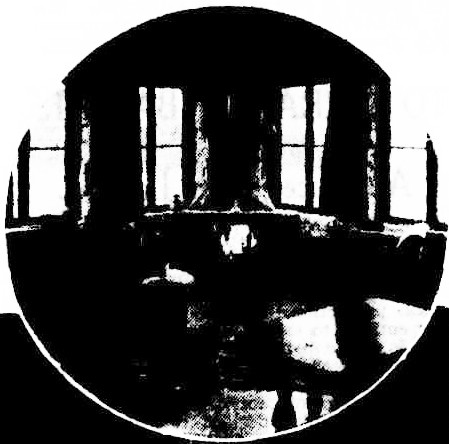 Still more out of breath, we climb the second broad flight of stone steps and have reached the end of our journey. We are on a broad stone-paved courtyard, fully thirty feet square, one side protected by the length of the house, which runs out at an angle from the solid stonewall of rock, out of which it has been hewn, the rock-face providing the other side of the triangle of protection. And before our eyes stretches the most wonderful panorama of earth and sea and sky-the rugged headlands all up and down the coast, softened by a slight haze still hanging on the morning air.
Still more out of breath, we climb the second broad flight of stone steps and have reached the end of our journey. We are on a broad stone-paved courtyard, fully thirty feet square, one side protected by the length of the house, which runs out at an angle from the solid stonewall of rock, out of which it has been hewn, the rock-face providing the other side of the triangle of protection. And before our eyes stretches the most wonderful panorama of earth and sea and sky-the rugged headlands all up and down the coast, softened by a slight haze still hanging on the morning air.
"You see, I wanted to get away from every-thing," said our hostess as she led the way across the courtyard and up the shallow flight of steps into the living-room.
"You certainly have," we responded, and then stopped with another gasp of astonishment;-to add, when we had recovered sufficient breath “You do things on a grand scale here."
(Right, in circle.) This corner of the big living room can be converted into a separate sitting room.
The living-room of this rock-hewn house is fully sixty-five feet long and of great beauty. Walls are stone, for the solid slabs, eighteen inches thick, are the same inside as out, and rung right through to the beamed and shingled roof, the shingles showing through, for there is no lining to this lofty room. Some giant's hand, it seems, has placed the huge stone fireplace in position, with its great rounded hobs on either side and hearth coming well out into the alcove which ends in two huge square-built pillars, fitted on two sides with recessed shelves.
The floors throughout this house are solid cedar, rich red in colour and polished until they gleam. Rugs are strewn at intervals, and the walls are fitted at intervals all along the outer side (which is liberally set with windows) with box-couches, cleverly constructed of timber and fitted each with its set of bookshelves at the head and cupboard for blankets and linen underneath.
These beds are sprung with springs bought from the Rail-way Department and fitted by the Czech handy-man about the place for next to nothing. Upholstered with brown canvas and set with tawny coloured cushions, they are bright and in keeping with useful as well as decorate the room.
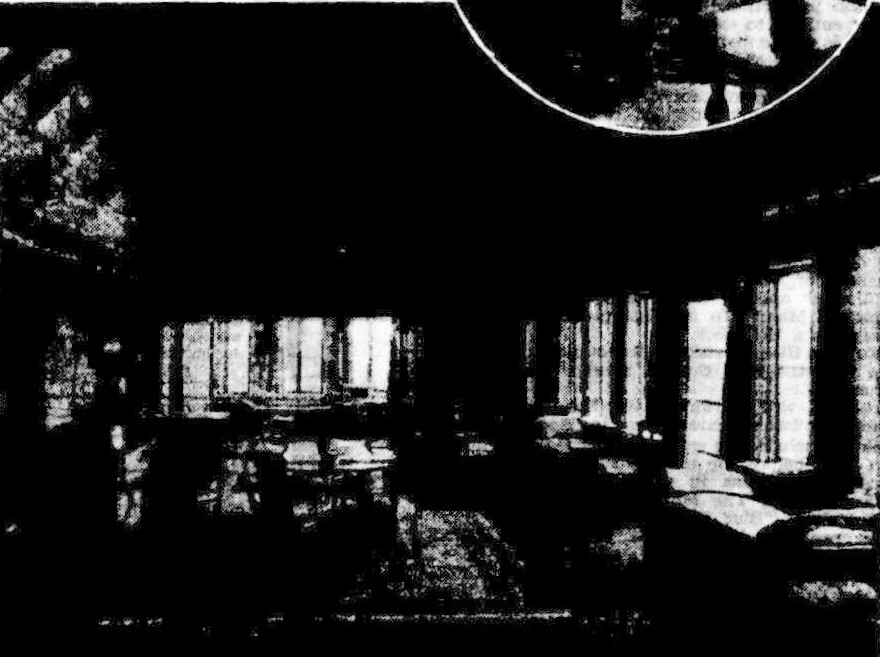
The great living-room, with its cedar floors and high-beamed ceiling.
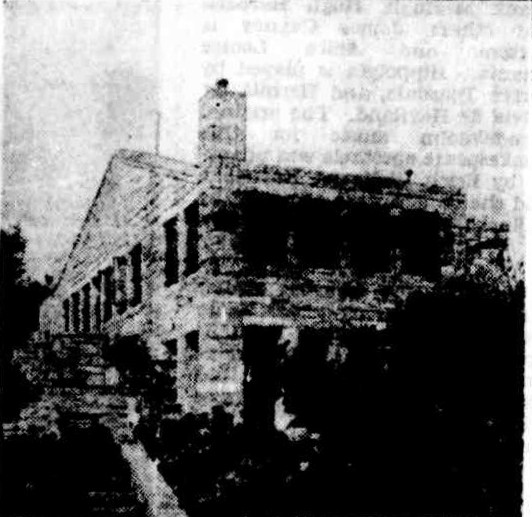
The house on the cliffs, with its broad flight of steps as an approach.
A set of folding doors the remainder of the room, planned, so that by pulling them divides one end from, This has been cleverly; the doors across, moving the couch from before a coiner fireplace, lighting the fire, drawing the curtains across the windows, a cosy sitting-room for winter months can be obtained, the bigger room being far too vast for tete-a-tete week-ends.
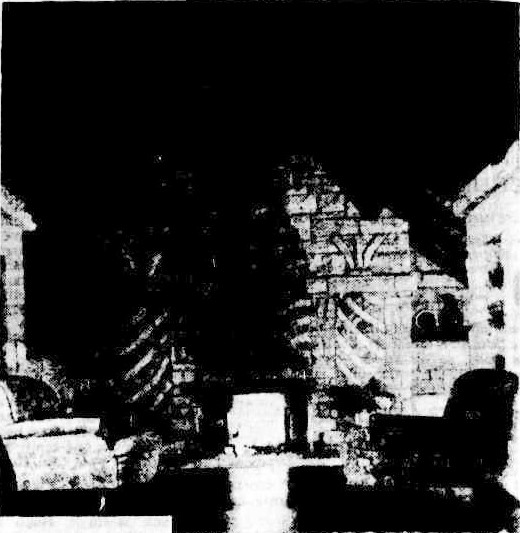
A fireplace built on generous proportions.
The bathroom in this stone mansion is a hand-some affair composed of daffodil yellow unglazed tiles, with a sunken bath and built-in lavatory and cupboards. The only primitive note is hi tick by the shower, which is operated by a string .
The lower floor is fitted as a self-contained flat, with sitting-room, bathroom hewn out of the solid stone, and a quaint (if cold) bedroom, where the sleeping accommodation is approached by a tiny flight of stone steps in the rock, the bed being built in on top of a flat rock. Rather a mediaeval touch, this one.
This is a retreat from Life, a place- of clean «sea winds and spacious views-a place built el(.-e| to Nature, and where only the real things in life seem to hold significance. The house on the cliffs. -V.H. The HOUSE on the CLIFFS. (1935, June 13). The Sydney Morning Herald (NSW : 1842 - 1954), p. 10 Supplement: Women's Supplement. Retrieved from http://nla.gov.au/nla.news-article17202285
STAGE and SCREEN-, A SCHOOL OF DRAMA With the Sky for Roof.
AN experiment unique in the history of little theatres in Australia was made by the Players’ Club when they held their drama school recently at Careel House, Whale Beach, the beautiful home of Major and Mrs. Grieve In a glorious setting which would assure the success and happiness of any venture. Set high up on a ridge, the house commands a pageant of restless sea, of green trees climbing the ochre cliffs, and of intricate blue hills fringing the coast from Broken Bay to Manly.
A gracious act of fellowship between the "little theatre" and the professional stage was the visit of Gabriel Toyne and Betty Bowden, of the "Laburnum Grove" company. One of the high-lights of the week-end was Mr. Toyne's address, provocatively entitled: "The Theatre is Dead! Long Live the Theatre!" Fascinated, we listened to stories of dramatic experiments and hints upon setting and lighting, in the living-room, which itself provided a setting full of drama-rough sandstone shadowed in the subdued light coming from the lamps set in old ships' lanterns; rich beamed roof gleaming faintly; and a warm, red-dish glow from the great open fireplace at the end of the room, glinting on the lovely brass and bronze pieces hung round the wall.
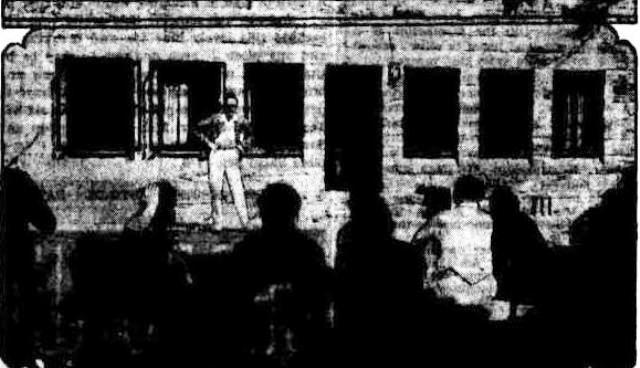
PIC MR. JACK APPLETON addressing a group at the drama school at Careel House, Whale Beach.
During the week-end Alice Gould gave a valuable lecture on voice production; Jack Appleton spoke upon stage presentation, and Kenneth Fowles upon "The Little Theatre and Radio." Play readings were arranged on two occasions by Beatrice Wines, "Hassan," in which the parts of Hassan and the Caliph were taken by Bill Wines and Owen Ainley respectively, being one of the successes of the party. Not less appreciated was the impromptu vaudeville show given by Wendy Woolfrey, Arthur O'Keefe, and Owen Ainley.
Doris State-better known as Doris William on the amateur stage-miraculously supervised our commissariat, so that we were well and economically fed-no mean feat.
The Drama School has definitely achieved something. It has taken drama into the lives of those fortunate enough to be of its company, and endowed it with laughter and poetry. And, in the words of "Hassan": "If there shall ever arise a nation whose people have forgotten poetry, or whose poets have forgotten the people, though they, mount to the stars on wings , . . they will be a dark patch upon the world."--D.C. (Dymphana Cusack report) STAGE and SCREEN. (1935, May 16). The Sydney Morning Herald (NSW : 1842 - 1954), p. 8 Supplement: Women's Supplement. Retrieved from http://nla.gov.au/nla.news-article17166385
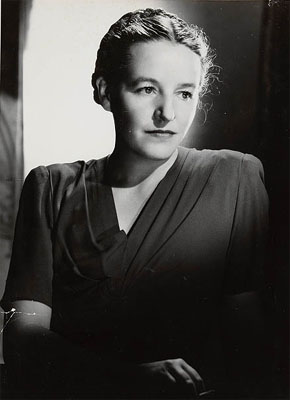 Ellen Dymphna (Nell) Cusack (1902-1981), author, was born on 21 September 1902 at Wyalong, New South Wales, third of six surviving children of James Cusack, storekeeper, and his wife Bridget Beatrice, née Crowley. After retiring from Teaching due to ill health, (diagnosed finally in 1978 as multiple sclerosis), ‘Dymphana’ as she preferred to be called, commenced writing plays and books. Dymphana Cusack remains one of Australia’s most prolific writers and is author of Jungfrau, 1936, Pioneers on Parade, 1939, with Miles Franklin, Come In Spinner, 1951, with Florence James, Say No to Death, 1951, Southern Steel, 1953, Caddie, the Story of a Barmaid, 1953. [Introduction only- later made into film 'Caddie'], The Sun in Exile, 1955, Heat Wave in Berlin, 1961, Picnic Races, 1962, Black Lightning, 1964, The Sun is Not Enough, 1967, The Half-Burnt Tree, 1969, A Bough in Hell, 1971.
Ellen Dymphna (Nell) Cusack (1902-1981), author, was born on 21 September 1902 at Wyalong, New South Wales, third of six surviving children of James Cusack, storekeeper, and his wife Bridget Beatrice, née Crowley. After retiring from Teaching due to ill health, (diagnosed finally in 1978 as multiple sclerosis), ‘Dymphana’ as she preferred to be called, commenced writing plays and books. Dymphana Cusack remains one of Australia’s most prolific writers and is author of Jungfrau, 1936, Pioneers on Parade, 1939, with Miles Franklin, Come In Spinner, 1951, with Florence James, Say No to Death, 1951, Southern Steel, 1953, Caddie, the Story of a Barmaid, 1953. [Introduction only- later made into film 'Caddie'], The Sun in Exile, 1955, Heat Wave in Berlin, 1961, Picnic Races, 1962, Black Lightning, 1964, The Sun is Not Enough, 1967, The Half-Burnt Tree, 1969, A Bough in Hell, 1971.
Careel House is described by her associates as her Whale Beach ‘eyrie’ where she would stay with Xavier Herbert with whom she had a brief but torrid affair (1942-43)*. Xavier Herbert is best known for his Poor Fellow My Country which won him the Miles Franklin literary award in 1975. Dymphna’s elder sister, Marge Tynan, who ran a nursing home at Coogee for many years and was a friend of Mrs Grieves, also a nurse, first introduced the two to each other.
Careel House, by then operating as a Boarding House, was also used as a place to hold functions by those closer;
DINNER PARTY Going Abroad
THE picturesque Careel House at Whale Beach was chosen by Major and Mrs. Alan Murray Jones for a dinner party which they gave last night to say farewell to Mr. and Mrs. L. V. Waterhouse, who with their daughters will sail for England by the Monterey next Wednesday. Bowls and trails of flame and yellow nasturtiums decorated the table, toning with the stone walls. The guests Included Mr, and Mrs. Milburne, who will leave for Melbourne on Tuesday, Mr. and Mrs. Douglas Fell, Mrs. Marshall Allsop, Mr. and Mrs. Fred Allen, Mrs. V. Wellings, Captain Holyman, Mr. John Cross and Mr. Marshall (Melbourne).DINNER PARTY (1936, January 31). The Sun (Sydney, NSW : 1910 - 1954), p. 13 (LATE FINAL EXTRA). Retrieved from http://nla.gov.au/nla.news-article230087168
SATURDAY, APRIL 11. Dance, Palm Beach Surf Life-saving Club, Careel House, Whale Beach, 9 p.m. COMING EVENTS. (1936, April 8). The Sydney Morning Herald(NSW : 1842 - 1954), p. 32. Retrieved from http://nla.gov.au/nla.news-article17325780
Warringah Council Records underline a necessity to make this coastal property pay its own way:
3. C.B. Grieve, 11/10/36, submitting plans, levels, and a specification for road proposed to be constructed by him to give access to property, "Careel House" at Whale Beach from Rayner Road, the road to be partly on Rayner Road and partly on private property, requesting Council's approval to the road. Referred to the Engineer for report
The Grieves had a Caesar and as the location of the home was one the local koalas moved to during their annual shifts from food trees in Angophora Reserve to that atop Careel Head- Bangalley Head, they also had koalas:
DOG wire haired Terrier white black markings (Caesar) Lost from Careel House Whale Beach. Reward Phone Palm Bench 77 or MA5076 GRIEVE 170 Elizabeth Street, City. Advertising. (1937, October 13). The Sydney Morning Herald(NSW : 1842 - 1954), p. 23. Retrieved from http://nla.gov.au/nla.news-article17415938
KOALA LIKES MUSIC
Koala Visits Guest House
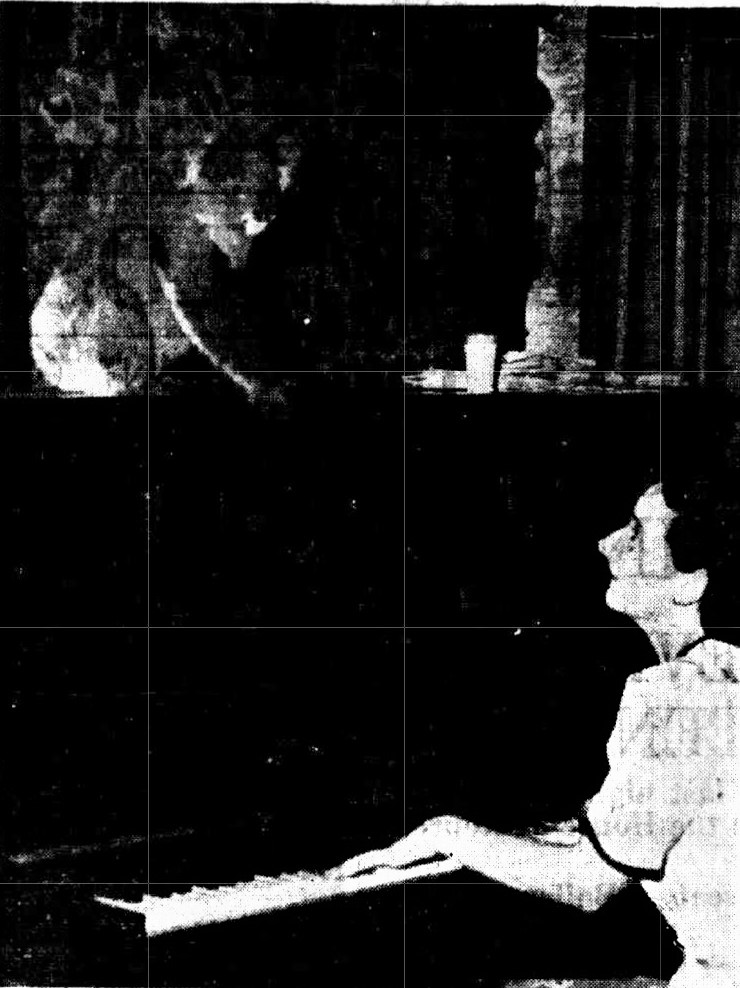
A koala bear last night paid a visit to Careel House, Whale Beach, near Avalon. In answer to persistent knocking shortly after 7 o'clock, the front door was opened, and guests were surprised to find the koala outside. Without inducement the animal entered the lounge, and immediately made itself at ease on one of the chairs. The picture above shows the bear quite at home on top of the piano, which is being played by a guest.
Mrs. C. B. Grieve, the proprietress, obtained a bunch of gum leaves, which the bear ate, unperturbed by the pattings and pettings of its admirers. Twice the "intruder" was placed on the terrace so that it might return to the gum trees which surround the house, but twice it demanded re-admittance. After a "visit" of nearly three hours, the bear consented to leave. KOALA LIKES MUSIC (1937, October 25). The Daily Telegraph (Sydney, NSW : 1931 - 1954), p. 2. Retrieved from http://nla.gov.au/nla.news-article247228753
An interesting incident connected with a koala bear is reported from Whale Beach, Avalon, a little seaside township on the north coast of New South Wales. It occurred at Careel House, a well-known guest home fronting the beach, at about 7 o’clock one evening. There was a persistent knocking at the front door, and when it was opened the guests were surprised to find that it was caused by a koala bear. Without the slightest inducement the bear entered the lounge, and at once made itself at home on one of the chairs. One of the guests was playing the piano and the little animal climbed up on the lid of the instrument. Mrs. C B Grieve, the proprietress, obtained a bunch of gum leaves, which the bear ate, quite unperturbed by the pettings of its admirers. Twice Billy Bluegum was placed on the terrace in order that he might return to the gumtrees which surround the house but twice he demanded readmittance. The bear remained in the lounge for about three hours before it would leave, it may have been an escaped pet. About INTERESTING PEOPLE. (1937, November 11).Chronicle (Adelaide, SA : 1895 - 1954), p. 17. Retrieved from http://nla.gov.au/nla.news-article92478766
SIR FREDERICK and LADY MANNING are now established in their hill top home, Careel House, Whale Beach. Spotlight on Society (1939, December 5). The Sun (Sydney, NSW : 1910 - 1954), p. 13 (LATE FINAL EXTRA). Retrieved from http://nla.gov.au/nla.news-article231500227
Careel House as it was in 1940:
Under Instructions from The Mortgagee. In exercise of Its Power of Sale. CAREEL HEAD-WHALE BEACH. Commanding unsurpassed views over Beaches. Coastline, and Country. "CAREEL HOUSE." A UNIQUE PROPERTY, IDEAL AS A WEEK-END HOME, or suitable for ROAD HOUSE, Tea Rooms, etc. THE BUILDING is of Stone, rooted with shingle and Iron, and comprises most spacious Living room, with open fireplace. In deep lounge alcove. Sun-room (corner Fireplace). 2 Bedrooms (wall beds). Tiled Bathroom (Sunken Bath. Porcelain Pedestal Basin, Lavatory, etc.). Kitchen, store- room, and stair bedroom. Lower Ground Floor: Bed-living Room (fitted with wall-beds). 1 Bedroom, Kitchen. Bathroom. Lavatory. Septic Sewerage. City Water. Electric Light. GARAGE. Stone Terraces, Pathways, Rock Gardens. IRREGULAR BLOCK OF LAND, having frontages to RAYNER ROAD and WHALE BEACH ROAD. TORRENS. Mr. COLIN ROBERTSON, Vendor's Solicitor. RICHARDSON and WRENCH, LTD.. In conjunction with J. T. STAPLETON PTY.. LTD.. will submit the above for Sale by PUBLIC AUCTION, at the Rooms. 92 PITT STREET, on FRIDAY, 7th JUNE, at ll a.m._ (330). Advertising. (1940, May 25). The Sydney Morning Herald (NSW : 1842 - 1954), p. 24. Retrieved from http://nla.gov.au/nla.news-article27951813
By July: Whale Bench, residence known as Careel House Careel Head In conjunction with J T Stapleton Pty Ltd £ 1 300. REAL ESTATE. (1940, July 20). The Sydney Morning Herald(NSW : 1842 - 1954), p. 10. Retrieved from http://nla.gov.au/nla.news-article17693948
In 1941, with both the Grieves fulfilling war duties, the property was offered for lease:
HARDIE A. GORMAN PTY LTD- 38 Martin Place . 86067. WHALE BEACH CAREEL HEAD- Commanding Uninterrupted Views: Attractive and Well-furnished Home comprising spacious living room, (open fireplace) lounge alcove, sunrooms 4 bedrooms, 2 tiled bathrooms staff bedroom etc CITY WATER FLECTRIC LIGHT GARAGE MODERATE RENTAL TO AN APPROVED TENANT. Advertising. (1941, July 23). The Sydney Morning Herald (NSW : 1842 - 1954), p. 13. Retrieved from http://nla.gov.au/nla.news-article17743874
BEAUTY Lovers.-Why not spend the weekend at Careel House? 'Phone. Palm B. 77 Advertising. (1941, November 22). The Sydney Morning Herald(NSW : 1842 - 1954), p. 21. Retrieved November 28, 2012, from http://nla.gov.au/nla.news-article17775129
Dymphana, playwright, continued to rent the premises for drama festivals on the ‘Greek Terraces’ that formed part of the eastern boundary of the property and its flagstone forecourt. These have only recently been bulldozed the current owner stated, to make way for a new house.
Plays and Players at Careel Head
MISS MARIE NEY. who will be staying at Palm Beach over the Easter weekend, will give an address on Easter Sunday to delegates attending the drama festival at Careel Head, Whale Beach, on Easter Saturday, Sunday, and Monday. THE festival has been organised by the Federation Players to develop a co-operative repertory movement, and forty delegates will be in residence at Careel Head over the three days. A group of players from Armidale, the Arts and Crafts Players, will present "Ma Sampson" on Easter Saturday afternoon.
The organisers, Miss Rosalie Collins and Miss Dymphna Cusack, have provided a varied programme for the festival, which they think is the first of its kind in Australia.
Nine or Ten Plays
THE plays-there will be nine or ten of them will be staged as the producers wish, either inside the lovely Careel Head house or on one of the three terraces overlooking the coast, and these terraces themselves will be used either as a sunken or a raised stage. The fare will be varied, with "Morning," by Miss Betty Roland, as the only play by an Australian author.
Many people who have been unable to secure week-end accommodation at Careel Head will go down for various days or for individual sessions, which, besides the production of the plays, will include lectures on stagecraft, film-making, small theatres of England, the method of the Moscow Art Theatre, and other aspects of the theatre. There will also be an exhibition on show during the festival of books and pictures dealing with the theatre lent by Madame Erom, of Vienna JMwho will lecture on ''Experimental Stages of Europet^B on Easter Monday. Plays and Players at Careel Head. (1941, April 8). The Sydney Morning Herald (NSW : 1842 - 1954), p. 12 Supplement: Women's Supplement. Retrieved from http://nla.gov.au/nla.news-article17718730
DRAMA FESTIVAL.
MORE than a hundred visitors went to Whale Beach on Saturday night to see the play presented by the Sydney University Dramatic Society at the drama festival being held at Careel House. The festival, which will conclude to-day, has been attended by members of all the playgroups in Sydney, each of which has presented a one-act play. Among those who have given lectures are Miss Marie Ney, who spoke of the need for co-operation among amateur societies, and Mrs. Anne Peck, who told of the English summer stock companies. DRAMA FESTIVAL. (1941, April 14). The Sydney Morning Herald (NSW : 1842 - 1954), p. 2. Retrieved from http://nla.gov.au/nla.news-article17723483
And then a reflection of service personnel in Sydney for WWII:
Palm Beach - ANGLO AMERICAN LODGE CAREEL HEAD (late Careel House) 300ft elevation. VISITORS Welcome caSual or permanent. Dine buffet. Play badminton fish. Koala bears Caves etc Regular bus from Wynyard 2/House car to beaches and golf links daily. Phone Palm Beach 77 for rates etc. Advertising. (1942, January 3). The Sydney Morning Herald(NSW : 1842 - 1954), p. 6. Retrieved from http://nla.gov.au/nla.news-article17781801
Careel House was used by the Defence Forces in 1943-44 as a lookout post for coastal watch, with its great vistas this was a good point for this, and is listed then as owned by Mrs Grieve in official war records: Careel House, Whale Beach [Hire of by the Australian Military Forces. Property owned by Pauline Grieve and required as a troop accommodation site by 18 Australian Infantry Battalion].
After World War II:
ELECTRIC FRIDGE 5 cubic feet Palmuce p p £ 60 sp £ 60 Elec Cooker MacClary 3 plate Side Oven Bentley. Careel House Whale Beach Private Sale Phone Palm Beach 155 appointment only. Advertising. (1946, August 28). The Sydney Morning Herald (NSW : 1842 - 1954), p. 14. Retrieved from http://nla.gov.au/nla.news-article17987039
Suds (Sydney University Drama Society) are also hoping to take Careel House, and run a summer school there-a holiday house for members, and a play to be performed at week-ends on the terrace. Intimate Jottings. (1946, November 16). The Australian Women's Weekly (1933 - 1982), p. 24. Retrieved from http://nla.gov.au/nla.news-article47502872
By 1949 C B Grieves is on the Phillip electoral roll and then Mitchell by 1954. During the late 1940’s and 1950’s Victorian radio comedian Dick Bentley used to rent Careel House for summers. He may have met Major C B Grieves when travelling to entertain troops.
* Yarn Spinners: A Story in Letters - Cusack, Franklin, James By Dymphna Cusack, Florence James, Miles Franklin, Marilla North. Univ. of Queensland Press.

Viw to Whale Beach from Careel House, December 2012. Photo by A J Guesdon.

View to Careel Bay from Careel House, December, 2012. Photo by A J Guesdon.
Careel House threads collected and collated by A J Guesdon, 2012.